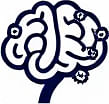The Butterfly Effect and Its Role in Decision Making
 by Shanie Goodwin
by Shanie Goodwin
The Butterfly Effect shows how minor actions can create significant outcomes in various fields. Explore its origins in science, applications in psychology and business, and ways to apply it for better cognitive growth and strategic thinking.
The Butterfly Effect originates from chaos theory, where a small event like a butterfly flapping its wings can lead to large weather changes. This idea highlights how small changes might result in major impacts over time.
In science, this concept first appeared in studies of weather patterns. Scientists observed that tiny variations in initial conditions could produce vastly different results. For example, a slight atmospheric disturbance might grow into a storm. This shows the sensitivity of certain systems to initial inputs.
Moving to psychology, the Butterfly Effect influences how people view behavior and personal development. Chaos theory principles suggest that small decisions in daily life can shape long-term mental health and habits. A simple choice, such as starting a new routine, could alter one's emotional state profoundly.
In business, this mental model helps leaders consider the broader implications of their actions. For instance, a minor policy adjustment in a company might affect market trends unexpectedly. Managers use this to anticipate risks and opportunities, making it a key tool for strategic planning.
Why This Model Matters
Cognitive development benefits greatly from understanding the Butterfly Effect. It encourages individuals to pay attention to everyday choices and their potential ripple effects. In education, teachers might apply this by showing students how small study habits lead to academic success.
Practical examples abound in history and modern events. Consider how a single invention sparked an industrial revolution, demonstrating how unpredictable outcomes stem from humble beginnings. This perspective fosters resilience and adaptability in uncertain situations.
To apply the Butterfly Effect in daily life, start by tracking minor decisions and their results. Keeping a journal can reveal patterns that might otherwise go unnoticed. For professionals, this means evaluating team interactions and their influence on project outcomes.
In psychology, therapists often discuss this concept to help clients understand the cumulative impact of behaviors. A small shift in mindset, like practicing gratitude daily, can build into significant emotional improvements.
Business strategies incorporate the Butterfly Effect through scenario planning. Companies simulate various small changes to predict possible futures, aiding in risk management. This approach has helped organizations navigate economic shifts effectively.
Challenges and Considerations
One challenge is the difficulty in predicting exact outcomes. Not every small action leads to a big change, which requires a balanced view. However, recognizing potential amplifications can enhance decision-making processes.
For lifelong learners, exploring this model opens doors to related ideas in cognitive science. It connects to concepts like feedback loops, where actions reinforce or alter behaviors over time.
In practice, individuals can use tools like mind maps to visualize how small changes interconnect. This visual aid makes abstract ideas more concrete and actionable.
Business leaders might conduct workshops on this topic to train teams in foresight. By focusing on subtle influences, groups can improve innovation and problem-solving.
The Butterfly Effect also intersects with personal growth. In self-improvement, acknowledging that tiny efforts compound encourages persistence. For example, reading a few pages daily can lead to vast knowledge gains.
Real-World Applications
- In environmental science, small conservation efforts can prevent larger ecological disasters.
- In health, minor lifestyle adjustments like better diet choices can result in substantial well-being improvements.
- For cognitive development, engaging in brief daily exercises can enhance brain function over years.
This mental model promotes a proactive mindset. By considering the potential of unpredictable outcomes, people can make more informed choices in their careers and personal lives.
Ultimately, embracing the Butterfly Effect enriches one's approach to challenges. It reminds us that even modest actions hold the potential for transformation, making it a valuable asset for curious minds and professionals alike.
